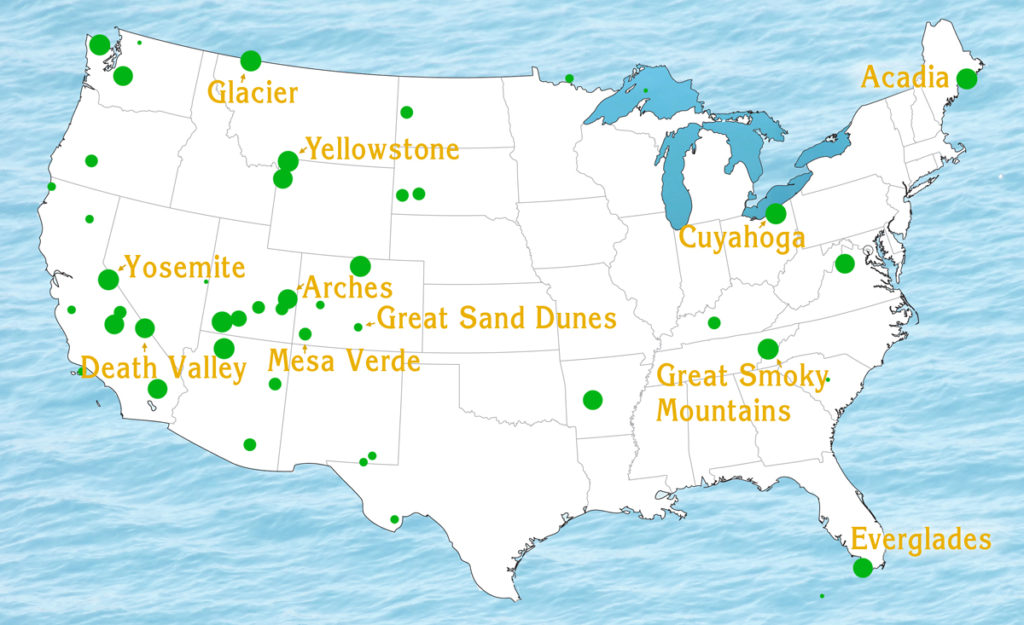
National parks are America’s prized treasures. Visitors come from all over the world to see our gorgeous landscapes, snow-peaked mountains, vast deserts, lush forests and iconic coastlines. These protected areas, home to unique geological features and wildlife, are not only wonderful for sightseeing, but are valuable to maintaining the biodiversity humanity needs to survive.
If you’ve never been to a national park, what are you waiting for? The America the Beautiful Annual Pass is your ticket to more than 2,000 federal recreation sites, including all 60 national parks. The $80 cost covers entrance for all passengers in a single vehicle and is free for current military members—quite the bargain for what you get in return.
Here is just a taste of what United States national parks have to offer:
Yellowstone
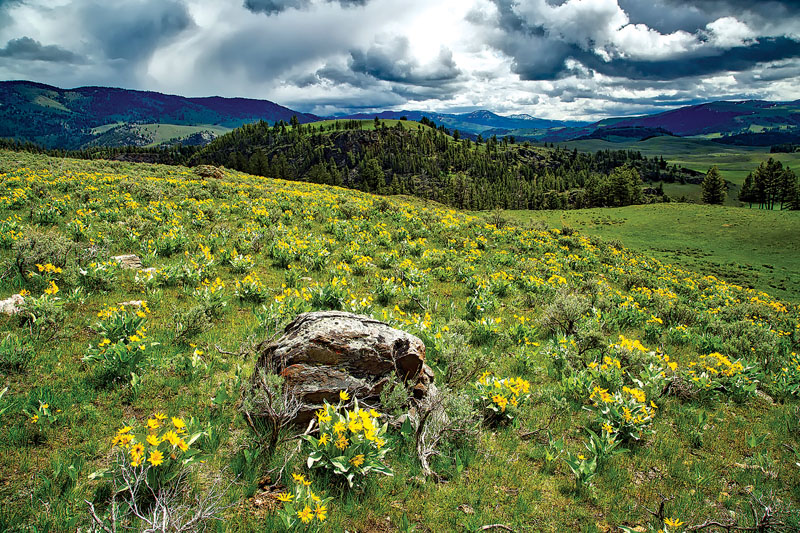
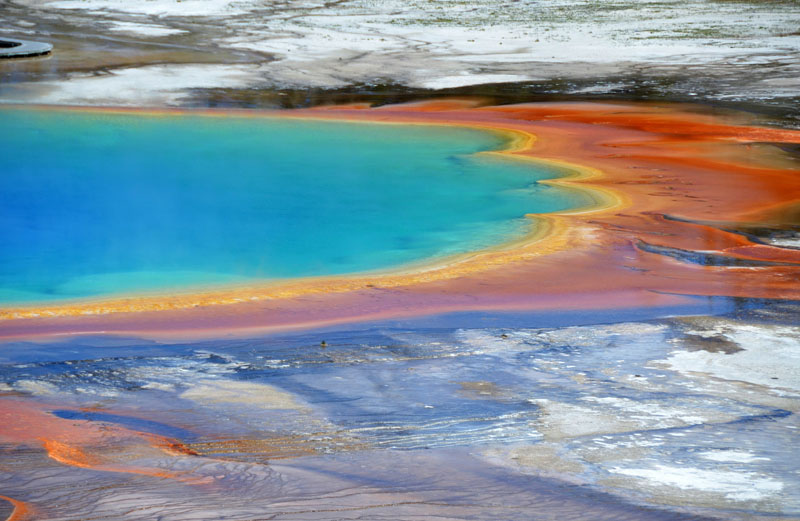
President Ulysses S. Grant established Yellowstone as the first national park in 1872. Located in the northwest quadrant of Wyoming, this 3,400-square-mile park contains lakes, canyons, rivers, mountain ranges and the notorious Old Faithful geyser. Notably, Yellowstone Lake is positioned above a volcanic caldera, also known as a supervolcano, which has the potential to erupt with an explosion more than a thousand times as powerful as Mount St. Helens. Luckily, there’s no sign of eruption just yet.
Yosemite
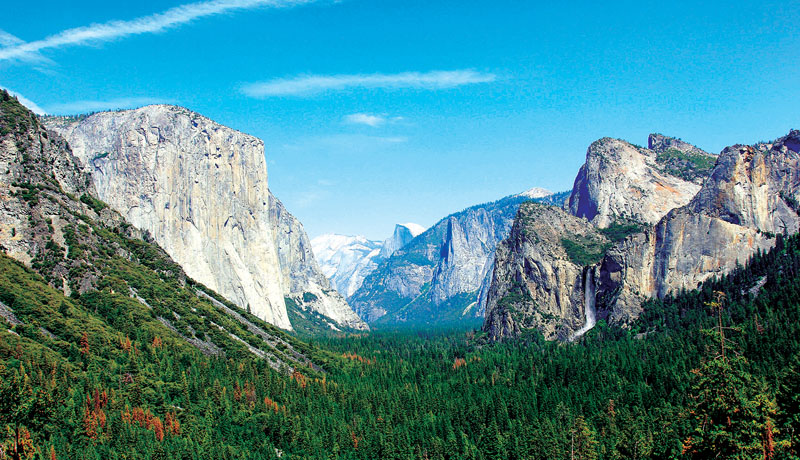

Officially established in 1890, during spring and summer each year Yosemite sees millions of visitors, who are attracted to the park’s signature rock formations, many waterfalls and boundless wilderness. The drive down Tioga Road into Yosemite Valley is as breathtaking as the actual park. Located within the Sierra Nevada mountain range in California, the park was a favorite of naturalist and author John Muir, photographer Ansel Adams and countless hikers, kayakers, bird watchers and campers today.
Death Valley
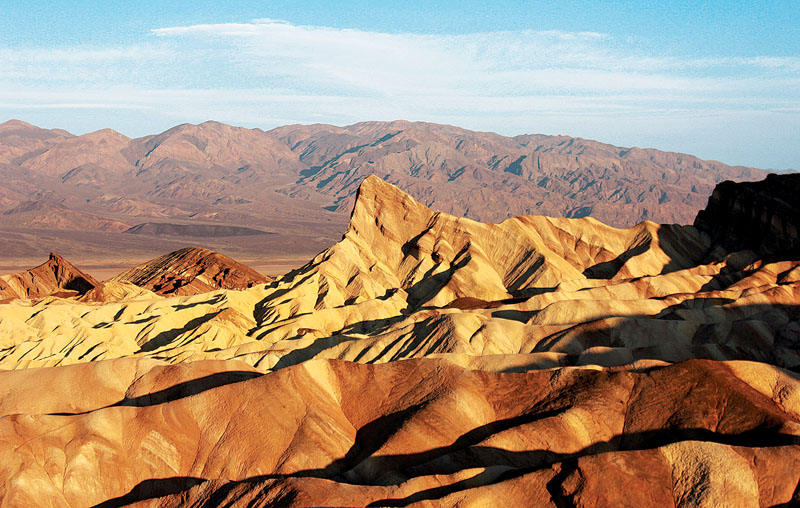
A study in superlatives, Death Valley is like no other place on Earth. It boasts the highest air temperature ever recorded in the world—134 degrees in 1913, the lowest point in North America—at an elevation of 282 feet below sea level, and wildlife that exists nowhere else in the world—the rare and extremely endangered fish called Devils Hole Pupfish. These extremes are what draw visitors to the park, which is not the lifeless wasteland it sounds like. The 3.4-million-acre area contains the most striking landscapes, from mountain ranges and sand dunes to badlands and natural hot springs.
Arches
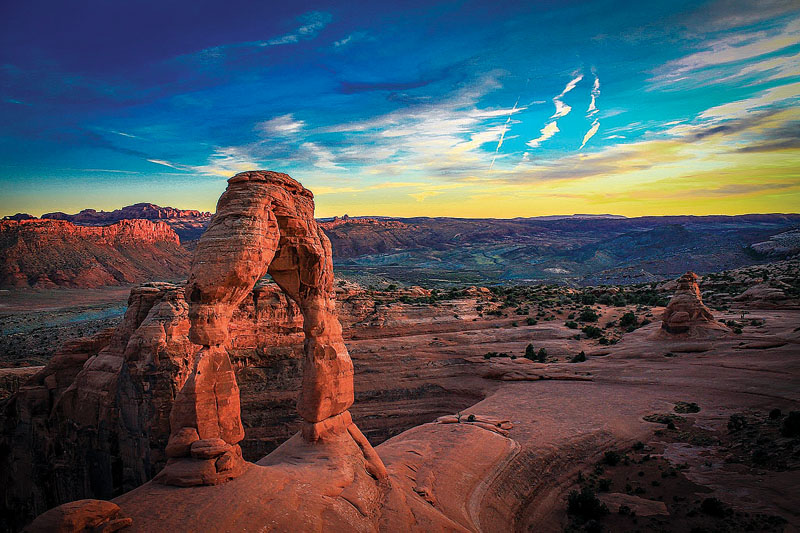
The natural arches and bridges contained within Arches National Park are a wonder to behold. Dubbed the “Holey Land” by Utah.com, the park features 2,000 named arches that beckon hikers, bikers, off-roaders, rafters, photographers, climbers, campers and stargazers to the red rock wonderland.
Acadia

Though smaller than the others at 47,000 acres, Acadia National Park is no less beautiful with its rugged and awe-inspiring terrain. Located on several islands in Maine, Acadia is the oldest national park east of the Mississippi River. In the early 1900s, John D. Rockefeller Jr. developed more than 50 miles of trails and 16 arched granite bridges which remain today.
Great Smoky Mountains

In addition to being a national park, the Great Smoky Mountains are a UNESCO World Heritage Site, joining the ranks of Stonehenge and Machu Picchu. This ancient mountain range between North Carolina and Tennesse is named for the fog that settles among the peaks and valleys every morning. It is America’s most visited national park, by those seeking tranquility and recreation alike.
Everglades
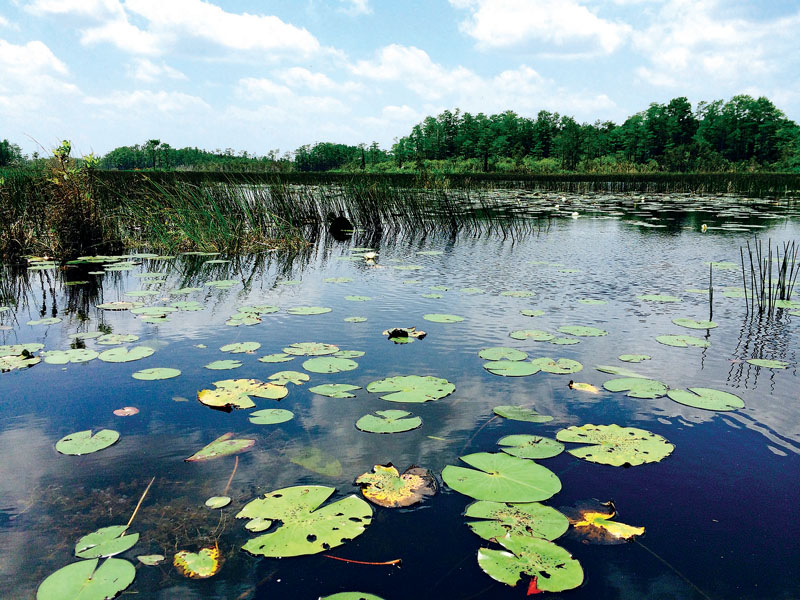
In addition to being a national park, the Everglades are a World Heritage Site, an International Biosphere Reserve and a Wetland of International Importance. The southern-most 20 percent of Florida was dedicated as a park in 1947 to protect the fragile ecosystem that supports hundreds of species of birds, fish, mammals and reptiles. Upon arrival, the network of tranquil wetlands can be experienced on foot, by bicycle, by canoe or kayak or from a tour boat.
Cuyahoga Valley
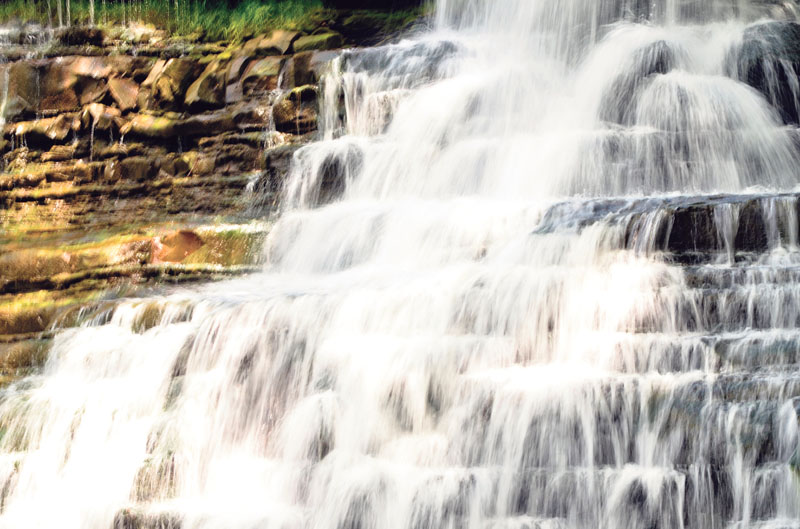
Within a day’s drive of Long Island, Cuyahoga Valley National Park is conveniently located in the countryside between Cleveland and Akron, OH. Canoeing and kayaking is popular on the river and the Towpath Trail attracts cyclists and horse riders. Along the path, you will find a beaver marsh, a covered bridge, the Canal Exploration Center and the visitor’s center housed in a 1800s building. The centerpiece of the park, however, is Brandywine Falls, a 65-foot waterfall surrounded by lush hemlocks.
Mesa Verde
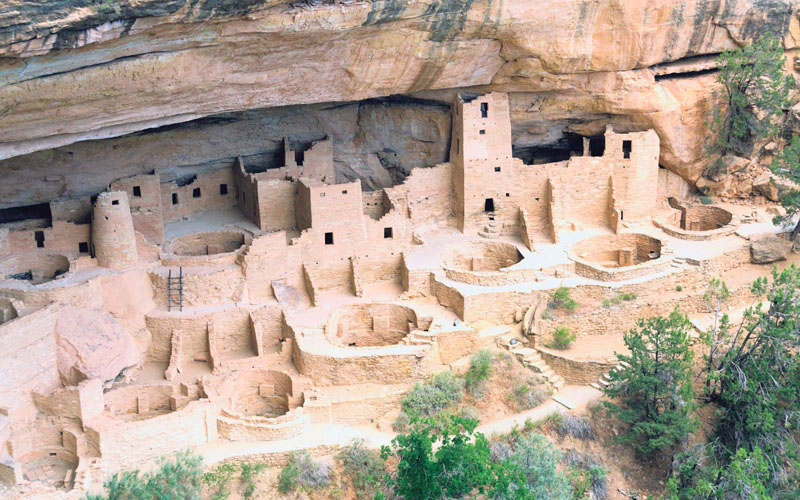
For more than 700 years, the Ancestral Puebloan people made Mesa Verde their home—now modern-day Colorado near the Four Corners region. Sometime around 1190, they moved from the top of the mesa into structures they built beneath the overhanging cliffs. These cliff dwellings are today the best preserved in North America. Though in photos they may look like part of a hand-carved diorama, in person it’s tough not to be in awe of the centuries old stone, mortar and plaster buildings that contain handprints and fingerprints of ancient Native Americans.
Great Sand Dunes
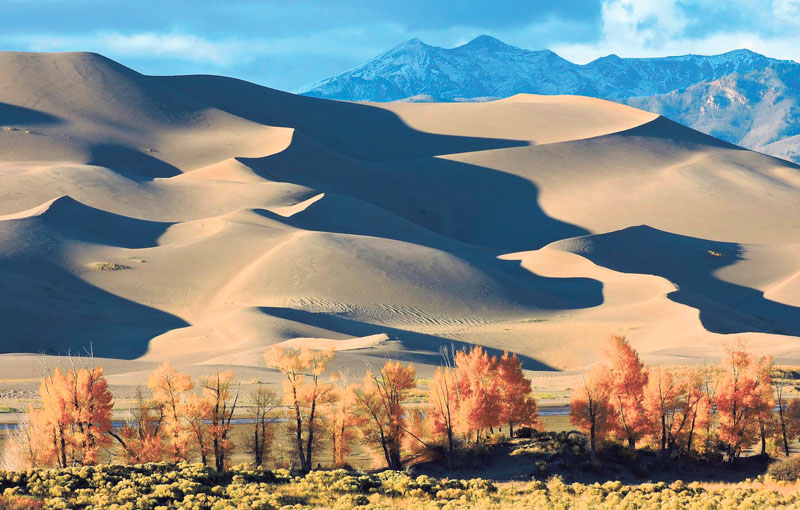
Long Islanders are familiar with the coastal sand dunes that protect our island from the rough seas, but ours are nothing compared to the dunes in Great Sand Dunes National Park & Preserve in Colorado—the largest in North America. Adventure seekers can rent sand sledding and sandboarding equipment as well as conquer some of the many hikes throughout the park. In addition to the dunefields, the diverse landscape includes grasslands, wetlands, conifer and aspen forests, alpine lakes and tundra.
Glacier
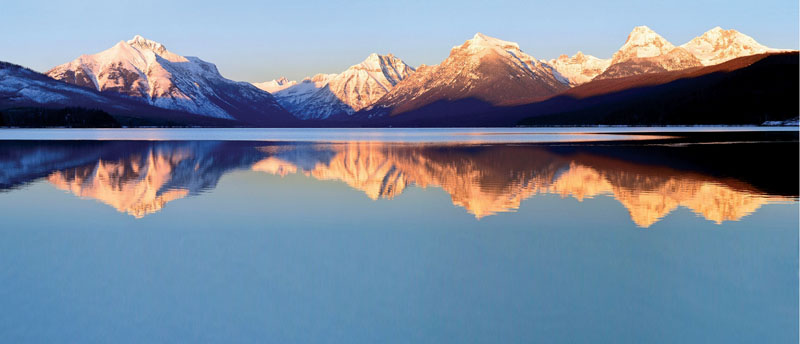
The mountains of Glacier National Park are a sight to behold. This area of Montana is known as the Crown of the Continent, but its value extends far beyond North America. The 10 million acres of high peaks, clear waters, forest, prairie, wetlands and glacial-carved valleys are considered one of Earth’s “last Edens,” where wildlife thrives in untouched habitats. Water from these glaciers flow to the Pacific, Hudson Bay and the Gulf of Mexico.
Editor’s note: This article was updated on Aug. 6, 2018, to include four additional national parks.


















